Last updated on
Discover the key differences between task lighting and ambient lighting in kitchens. Check out unique functions and how to effectively integrate them for a well-lit culinary space.
The kitchen is the heart of every home, and it’s where we spend a significant amount of time cooking, eating, and socializing with our loved ones. Lighting plays a crucial role in creating the perfect ambiance in any room, especially in the kitchen.
When it comes to kitchen lighting, there are two main types: task lighting and ambient lighting. Both serve different purposes and can transform your kitchen into a functional yet cozy space.
In this article, we’ll explore the differences between task lighting and ambient lighting in kitchens and how you can use them to create a well-lit, inviting space that suits your needs perfectly. So let’s get started!
Key takeaways:
- Task lighting illuminates specific areas for focused tasks.
- Ambient lighting sets the mood and highlights architectural features.
- Kitchen zones for task lighting include sink, stove, and countertops.
- Create ambience by layering task, ambient, and accent lighting.
- Choose fixtures that suit your style and consider energy efficiency.
What's Inside
Task Lighting: Purpose & Benefits
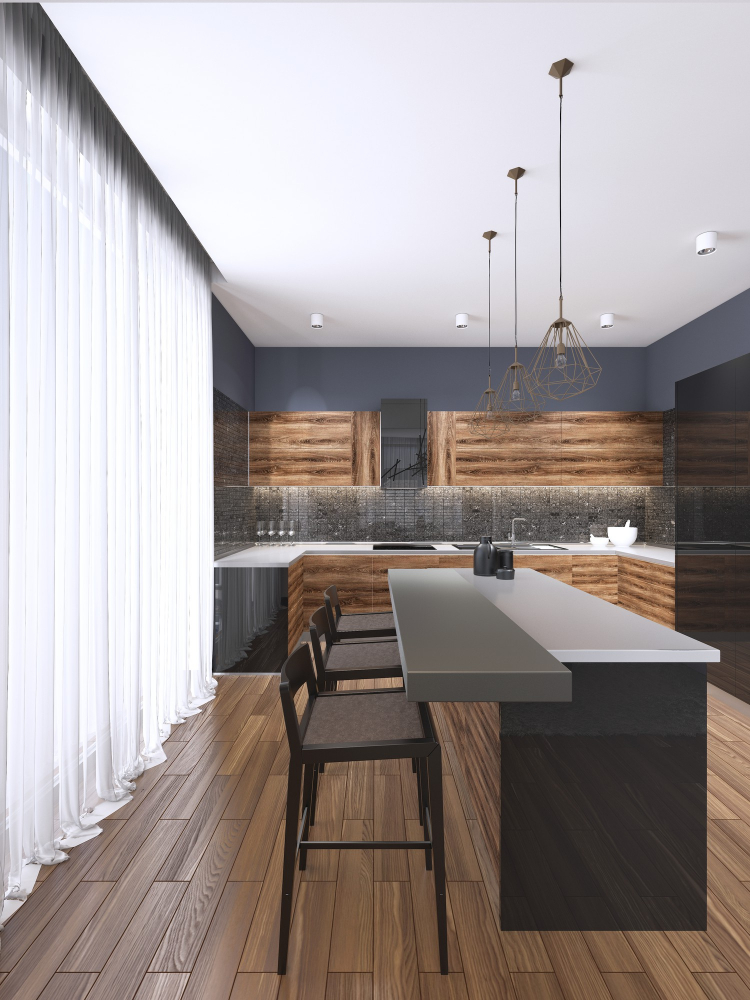
Task lighting is a type of lighting that illuminates specific areas in the kitchen where tasks are performed, such as cooking, chopping vegetables or washing dishes. The purpose of task lighting is to provide bright and focused light on work surfaces to enhance visibility and reduce eye strain.
Task lights can be installed under cabinets, above sinks or stoves, inside pantries or drawers.
The benefits of task lighting in kitchens are numerous. Firstly, it improves safety by reducing the risk of accidents caused by poor visibility while handling sharp objects like knives.
Secondly, it enhances productivity by providing ample illumination for food preparation activities which require precision and accuracy.
Thirdly, task lights add an aesthetic appeal to your kitchen design while serving their functional purpose; they come in various styles ranging from sleek modern designs to vintage-inspired fixtures that complement any decor style.
Ambient Lighting: Role & Advantages
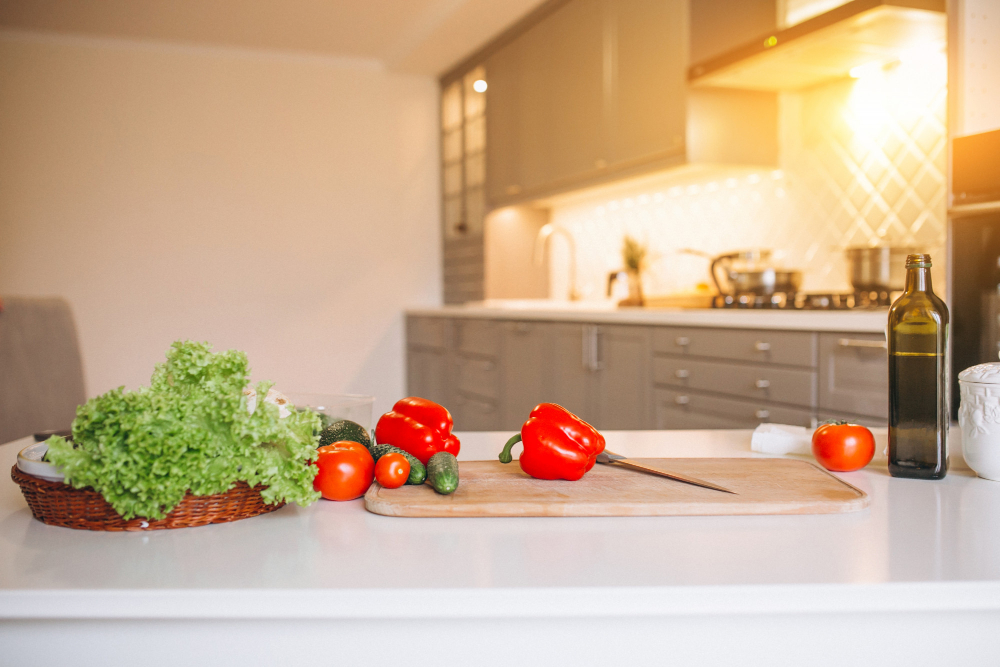
It provides a soft and warm glow that fills up space and creates an inviting atmosphere. The role of ambient lighting in kitchens is to set the mood for cooking, dining, or entertaining guests.
It can also help highlight architectural features such as cabinets or countertops.
One advantage of ambient lighting is its versatility; it can be used alone or combined with other types of lights to create different effects depending on your needs. For example, you may want to use dimmer switches so that you can adjust the brightness level according to your preference.
Another benefit of ambient lighting is its ability to make small spaces appear larger by creating an illusionary effect through shadows and highlights. This type of light helps eliminate harsh shadows created by task lights while providing enough illumination for general activities like cleaning up after meals.
When choosing fixtures for your kitchen’s ambient lighting scheme, consider using pendant lights over islands or tables as they provide focused illumination without being too bright or overwhelming visually.
Kitchen Zones for Task Lighting
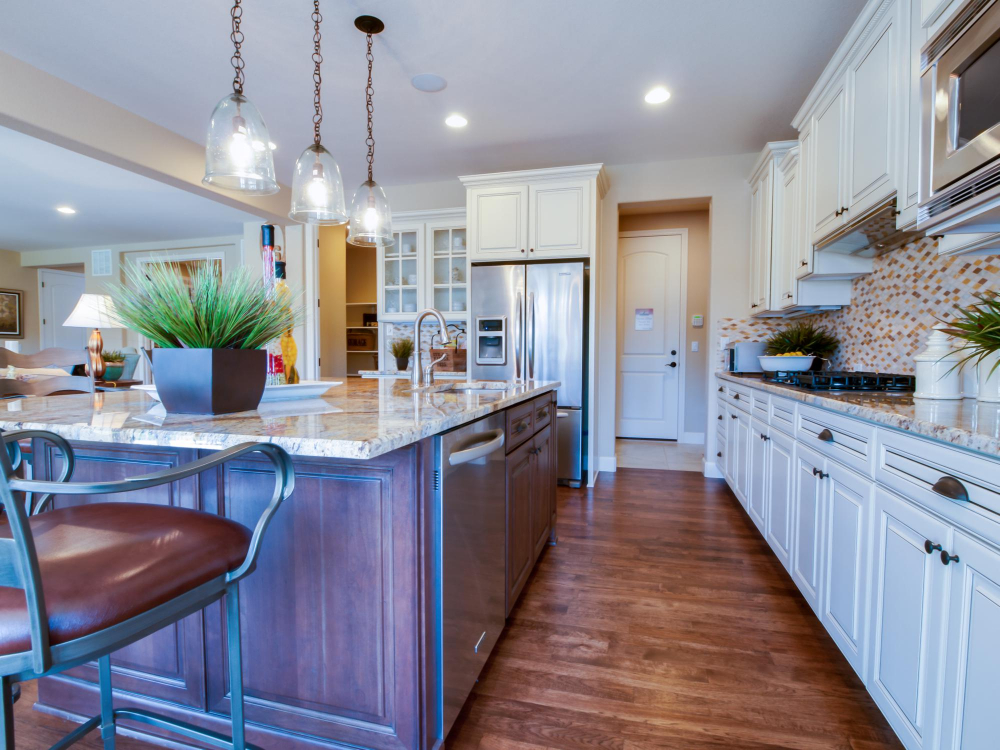
These areas include the sink, stove, and countertops where you prepare food. Task lighting in these zones helps you see what you’re doing more clearly and reduces eye strain while working.
For instance, under-cabinet lights are perfect for illuminating countertops as they provide direct light on the surface where most of your work takes place. Pendant lights above a kitchen island or dining table can also serve as task lighting by providing focused light on specific areas.
When planning your task lighting layout in each zone of your kitchen, consider factors such as brightness levels needed and color temperature preferences to ensure optimal functionality while cooking or entertaining guests.
Creating Ambience With Light Layers
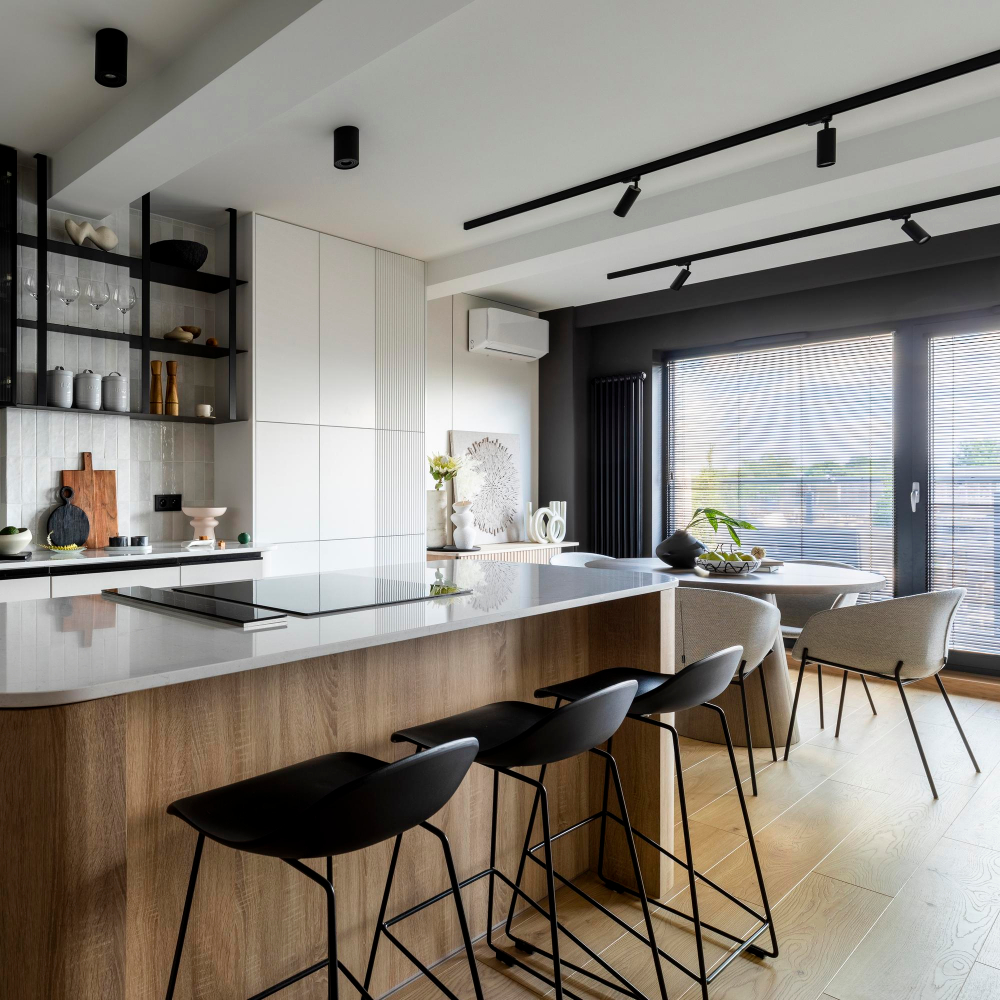
One way to achieve this is by layering different types of lighting in your kitchen. By combining task lighting, ambient lighting, and accent lighting, you can create a warm and inviting atmosphere that suits your needs.
Task lights are essential for performing specific tasks such as cooking or chopping vegetables on the countertop. Ambient lights provide overall illumination to the room while accent lights highlight specific areas or objects like artwork or decorative pieces.
To create an effective light layering scheme in your kitchen, start by identifying which areas require task lighting such as above countertops or stovetops. Then add ambient light fixtures like ceiling-mounted fixtures that distribute even light throughout the room.
Consider adding some accent lights to highlight certain features of your kitchen such as cabinets with glass doors or open shelves displaying beautiful dishes.
Choosing the Right Fixtures
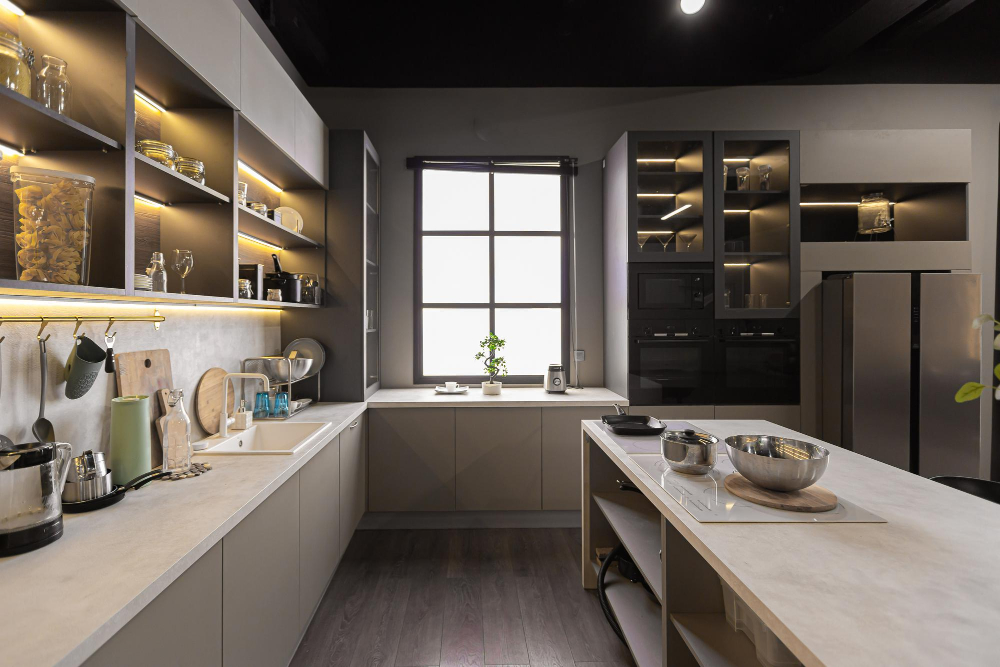
The type of fixture you choose will depend on your personal style and the overall design of your kitchen. Pendant lights are a popular choice for task lighting in kitchens as they provide focused light over specific areas such as countertops or islands.
They come in various styles, sizes, and colors that can complement any decor.
For ambient lighting, recessed lights are an excellent option as they create a soft glow throughout the room without being too harsh on the eyes. You can also use chandeliers or flush-mount ceiling fixtures to add some elegance and sophistication to your space.
It’s essential to consider both form and function when selecting light fixtures for your kitchen. Ensure that you choose high-quality bulbs with appropriate wattage levels that provide enough illumination while not consuming too much energy.
Balancing Task and Ambient Lights
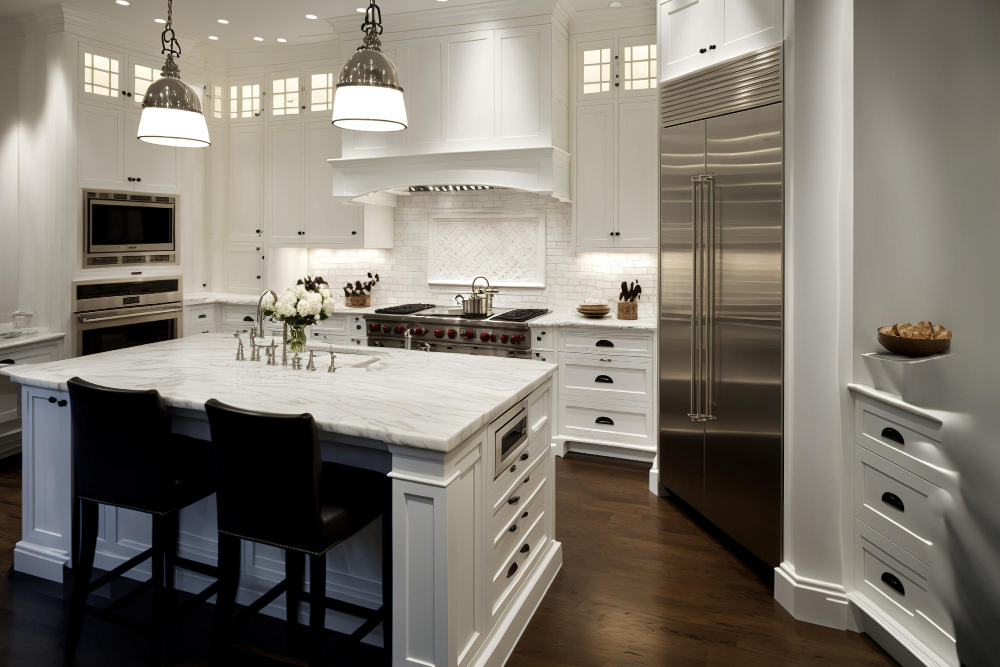
To create a well-lit kitchen that’s both functional and inviting, it’s crucial to balance these two types of lighting effectively.
One way to achieve this balance is by layering your lights. This means using different types of fixtures at varying heights and angles throughout your kitchen.
For example, you could install pendant lights over your island or sink area for task-specific illumination while adding recessed ceiling lights or wall sconces around the perimeter of the room for ambient light.
Another approach is to use dimmer switches on all your fixtures so that you can adjust their brightness according to different activities in the kitchen. When cooking or prepping food, turn up task-specific light sources such as under-cabinet LED strips; when entertaining guests or enjoying a meal with family members, lower them down slightly for more relaxed ambiance.
Energy Efficiency Considerations

Not only does it help reduce your carbon footprint and save on electricity bills, but also ensures that the lighting fixtures last longer. LED lights are a popular choice for both task and ambient lighting in kitchens due to their low energy consumption and long lifespan.
They emit less heat than traditional bulbs, making them safer for use in the kitchen.
Another way to increase energy efficiency is by installing dimmer switches or motion sensors that automatically turn off lights when not needed. This can significantly reduce electricity usage while still providing adequate illumination.
Consider using natural light sources such as windows or skylights during daytime hours instead of relying solely on artificial light sources.
By incorporating these simple yet effective measures into your kitchen’s lighting design plan, you can create a well-lit space that’s both functional and eco-friendly!




